Architectural Dictionary | B
Use this comprehensive, illustrated, easy-to-understand dictionary to find the meanings of terms related to Architecture, Buildings and Construction. The ‘B’ part of the Architectural Dictionary is divided into three parts. Click on the part you are interested in:

Back – A location opposite to face, usually hidden, and/or,To move in an opposite direction or to return to a start position
Back boiler – A small boiler fitted at the back of the hearth of an open fireplace or in a room heater to provide hot water and sometimes to heat radiators
Back Lintel – The lintel supporting the backing of a wall and seen on the face.
Back Painting – Painting the unseen face of building board to give balanced construction and prevent buckling or cracking from an impervious paint system applied to the face alone
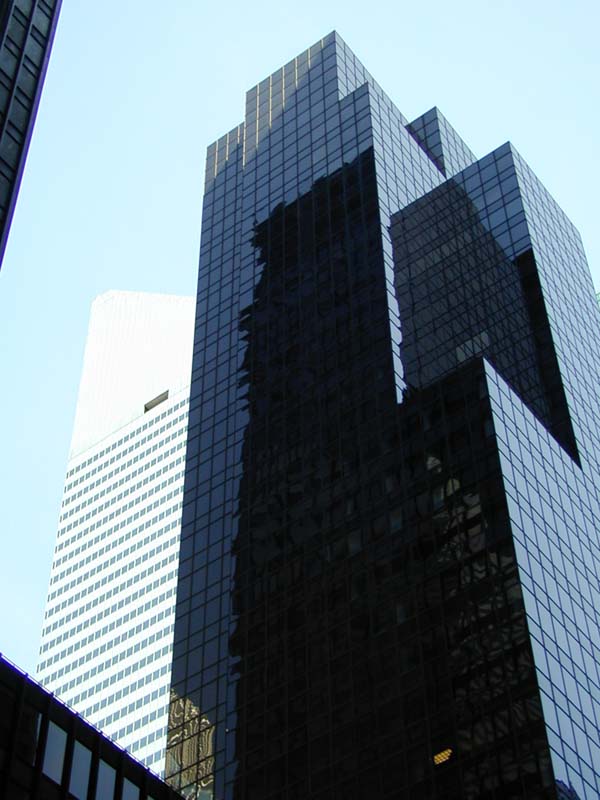
Back Propping – The replacement of props under a slab after stripping of formwork, to provide support while it gains strength and to reduce creep
Back Putty – The putty behind a pane of glass or other glazing as bedding between it and the rebate
Back Saw – A hand saw stiffened with a heavy fold of steel or brass along its back, such as tenon saw
Back Sawing – The breaking down of timber by flat sawing
Back Shutter – Formwork to the top face of a steeply sloping concrete slab, to hold the fresh concrete during placing and vibration
Back Siphonage – The sucking back of dirty water from within a building leading to backflow into a water main if its pressure drops.
Back Siphonage preventer – A valve in a water main with two non return mechanism separated by a self draining chamber
Backactor – A backhoe
Backdraught / Backdraft – The inrush of air (e.g. when a door is opened) into a closed, airtight room containing an oxygen starved, smoldering fire, as the hot gases inside are cooled and contract, drawing smoke back towards the fire.
Backer – A backup strip
Backer board – Gypsum baseboard
Backfall – A slope in a gutter (or any gravity drain) that is opposite to the intended direction of flow, resulting in pounding or backflow
Backfilling – Material returned into an excavation, around foundations or over buried services and their surround. It is placed in layers or lifts that are individually compacted
Back-flap Hinge – A hinge with wide flaps, screw fixed to the face of a door and frame, on a door too thin to be carried on butt hinge
Backflow – Movement of a fluid in the opposite direction to the natural or intended direction of flow.
Backflow Valve – A back-siphonage preventer. ( See picture below)
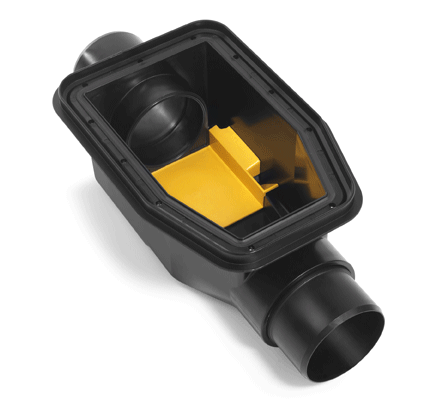
Background Drawing – A simplified floor plan of a building, used to help in coordinating the preparation of shop drawings for building services (such as air conditioning)
Background Heating – A heating system run at a low temperature, supplemented by gas or electric fires etc. during periods of occupancy and cold weather.
Background, Backing – A surface on which plasterwork is applied
Backgutter – A roof gutter on a uphill side of a chimney
Backhoe, Backacter – A versatile excavator with a bucket on a end of an arm, rather like a giant human arm
Backing – Support material behind a facing, such as concrete behind a stone
Backing Coat – Any coat of plaster other than finishing coat
Backnut – A nut used to make a tight and locked joint
Backset, Set back – The distance from the spindle of a door lock to the edge of door leaf
Backshore, jack – An outer support in raking shores, under the rider shore
Backup Strip, Backer – A strip of compressible foam plastic inserted into a movement joint to limit the depth of sealant to half the joint width.
Backward curved blade – An efficient aerofoil shaped blade of centrifugal fan, which does not overload the motor if the discharge is blocked
Backward Pass – A calculation for a programme using the critical path method working from the end event to the beginning event, to find the latest dates for each activity that will still give the earliest completion date calculated from the forward pass
Baffle – A device for breaking up the flow of air, water or light, often used as a diffuser
Bag Filter – An air filter used in air conditioning in which the air passes through bags
Bag Plug – An inflatable drain plug used for a drain test
Bagasse Board Cane – Fibre Board
Bagged joints – A flush joint made by rubbing brickwork with sacking
Bagging, Bag Rendering – Rubbing cement mortar over the face brickwork using sacking, to fill in small holes and to leave a rough textured surface suitable for painting
Bailey Bridge – A bridge prefabricated for rapid erection. ( See picture below)
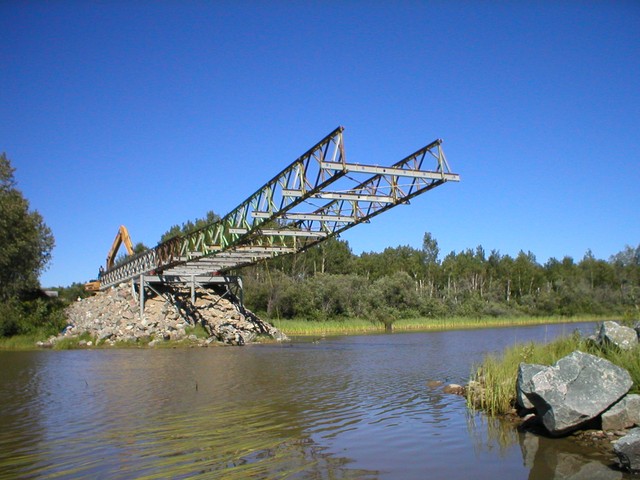
Bakelite – A type of plastic
Balanced construction – A method of construction of wood based building boards with equal thickness of wood in both directions of the grain.
Balanced Flue – A double Flue made so that the draught is balanced by running its two halves (usually concentric) to a shared terminal.
Balanced Sash – A sash window with counterweights or springs
Balancing – The adjustment of flow of water or air through radiation or air terminal nits (air balancing) so that each receives enough.
Balancing Valve – A lockshield valve for balancing the flow to radiators.
Balcony – A horizontal cantilevered projection including a handrail or balustrade to serve as passage or sitting out place and/or platform extension to a wall.
Baldacchino – Canopy over a throne or altar.
Ball catch, bullet – A cupboard door fastener with a spring loaded ball projecting slightly from a mortice in the door. The ball engages with a hole in a striking plate and holds by friction
Ball Cock – A ballvalve
Ball test – A drain test using a ball that fits into a pipe with about 12mm clearance. The ball is flushed down the pipe to a manhole to detect any partial blockage
Ballast – Unscreened gravel containing sand, grit and stones of less than boulder size, sometimes used to make concrete and/or
Material used for loading sometimes against uplift from the wind or water pressure or
An electrical choke in the control gear of a fluorescent tube
Ballast Grating, Gravel Guard – A screen in front of a rainmaker outlet to stop gravel ballast entering
Balloon framing – House with timber frame construction, with studs two stories high from the bottom plate to the roof plate, past the floor joists which are nailed to them
Balloon Grating – A large strainer over a rainwater outlet
Ballottini – Small Glass beads used in reflective paint.
Ballvalve, Floatvalve – A float operative valve used to control the flow of water into a cistern. It may have a delayed but rapid shut off to stop dribbling. Ballvalves often prevent waterhammer by releasing over pressure
Baluster – Pillar or column supporting a handrail or coping, or a post in a balustrade of a bridge or a flight of stairs. (See picture below)
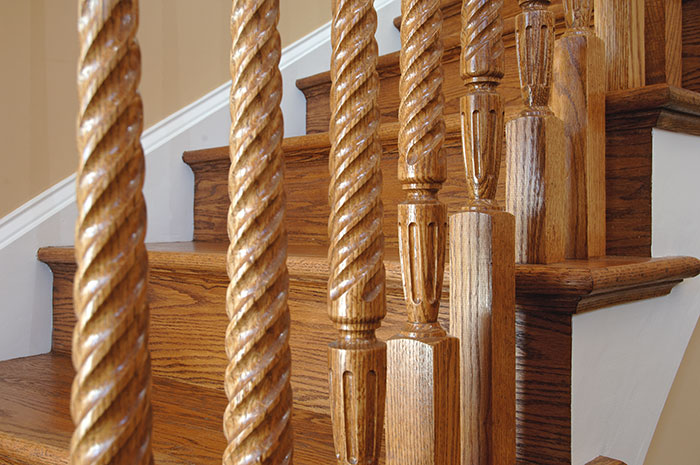
Balustrade – A protective guard rail to prevent people falling, at the edge of a stair, landing or a platform, with closely spaced infill such as balusters from the handrail down to the floor, and/or
A row of balusters joined by a rail.
Band Course – A string Course
Band Saw – A power saw with a continuous steel belt driven around two three pulleys. Used mostly for cutting timber, band saws range in size from large sawmill units with tungsten tipped teethes for the initial breakdown of logs to small benchtop units for fine joinery work
Banding – A lipping
Banister – A baluster
Bank Cube – Undisturbed volume of ground, before it is excavated
Bank of lifts – Several lifts at a common location, usually with shared controls
Bar – A long narrow shape, such as metal or wooden glazing bar or a steel reinforcement bar, or
A practical unit for pressure widely used in Europe, close to one atmosphere. It is an exact SI Unit (1 bar = 100kN/Sq.Mt. = 100kPa dd= about 10mt head of water
Bar Bender – A bending tool or a power bender
Bar Bending Schedule – A list of reinforcement bars giving their location and details of cutting and bending
Bar Chair – A support for a top layer of reinforcement bars in a concrete slab in the shape of a chair, either bent on site from small diameter bar or factory produced from wire
Bar Chart – A programme showing the work dates of each trade represented by bars. It is easy to understand, unlike master arrow diagram
Bar schedule – A bar bending schedule
Bar setting – Steel fixing
Bar Spacer – A small plastics accessory used to hold reinforcement away from formwork, at the correct cover distance
Barge Board, verge – Slopping roof trim of wood, plastics or metals fixed in pairs along the edge of a gable to cover the roof timbers and protect them from rain and/or
A brick coping to a gable wall, or the tiles next to the gable, slightly overhanging
Barge Flashing – A flashing over a barge board
Barium Plaster, X-ray Plaster – A radiation protection plaster containing barytes aggregates and gypsum plaster or portland cement as a binder, used on the walls of X-ray room to reduce the amount of radiation penetrating them
Barn – A building in which grain, hay are kept. (See picture below).
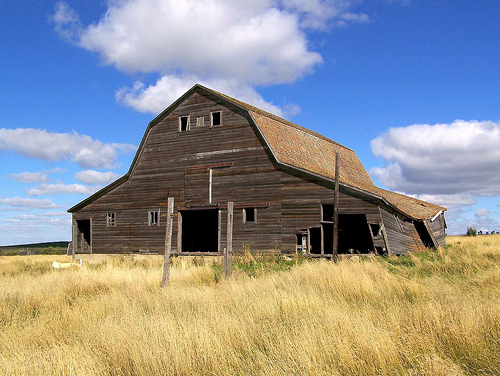
Baroque – In architecture, a mainly 17th century late Renaissance style of flowing forms, exuberant decoration and complex spatial compositions and/or
Originally a jewelers term applied to a rough pearl, now applied to a vigorous, exuberant style – grotesque, extravagant, whimsical – in vogue from the mid 16th to the late 18th century: sometimes used as equivalent to rococo.
Barrack – A building for soldiers, especially in garrison.
Barrel – That part of a pipe throughout which the bore and wall thickness remain uniform.
Barrel Bolt – A door fastener with a metal rod or bar that runs the case, entering a hole in the jamb. Sizes range from thumb slides to tower blots.
Barrel light – A roof light with curved glazing, often in polycarbonate, with similarly curved glazing bars. It resembles a barrel vault
Barrel Nipple – A short tubular with a taper thread outside at each end, unthreaded in the middle
Barrel Vault – Semicircular arch, ceiling or roof; simplest type of roof.
Barricade – A temporary fortification raised to block a street, an obstruction, to fortify.
Barrier – A limit or boundary, a fence or other structure to bar passage, prevent access, control crowds.
Barrier Effect – The formation of a thin film on a surface, protecting a material from further corrosion
Barrow Run – A temporary path for loaded wheelbarrows over soft ground or across floor joints, usually made by laying a series of scaffold boards
Barsati – Habitable room/ rooms on the roof of the building with or without toilets, kitchen.
Bartisan – A parapet or battlement.
Barytes – A heavy aggregate used in barium plaster (Barium Sulphate)
Base – The lowest part of a wall or column, which may be widened into a plinth on top of the footings and/or; A pad footing or a machine base, and/or; The surface over which a finishing is applied, such as granolithic on a stair tread as a base for vinyl tiles or a screed as a base for a topping and/or; The main ingredient of a product; for paint, either its main pigment or the main part of the medium (water based emulsion). (See picture below)

Base Course – The lowest course of a brickwork or blockwork wall, laid on top of the foundation. The top may be
Base Exchange – A water softening process in which water passes through a mains pressure tank containing zeolite, a mineral reagent, to absorb the salts which harden the water.
Base Gusset – A stiffening rib between a baseplate and a steel column
Base Moulding – A moulding at the top of a base, where it narrows into a wall or column, often acting as a weathering
Base Sheet – A Bitumen felt fixed down to a substrate, such as decking, and bonded to a intermediate sheets of built up roofing
Base Slab – A concrete slab under a structure, or a raft foundation
Base Tie – A small folded steel channel, bar etc. across the bottom of a pressed metal doorframe to hold the jambs at the correct spacing while the wall is built. It may be removed or covered by floor screed
Basement or Cellar – The lower storey of the building below or partly below the ground level.
Basement Wall – Either the wall round a basement or a sleeper wall supporting the floor
Baseplate, Stanchion base – A thick steel plate on the bottom of a steel column, with holes for holding down bolts. It may have base gussets and/or
A bearing plate on the end of a prop. Or jack, e.g. for an access floor
Basilica – In Roman and early Christian architecture, a rectangular building supported internally with double colonnades and with a semicircular apse at one end.
Basin Mixer – A mixer for a basin either a monobloc type for a single taphole basin or a combination type for a three taphole basin
Basin, Washbasin – A sanitary fitting for washing and rinsing the hands
Basketweave Pattern – A wood finishing with the grain in neighboring squares alternately in directions at right angles to each other
Bat – A rectangular panel of insulation covered with paper, made to fit between the studs of an external wall or between the joists of a ceiling
Batch – One mixing of concrete, mortar, plaster etc
Batch Box – A bottomless box filled with each constituent of a mix, then lifted away to leave the mix on the mixing platform.
Bath – A sanitary fitting, usually with a full-length tub and edge roll round the rim. Domestic baths are made from cast acrylic sheet, cast iron sheet or a steel sheet
Bath Mixer – A water fitting to blend hot and cold water for a bath. (See picture below)
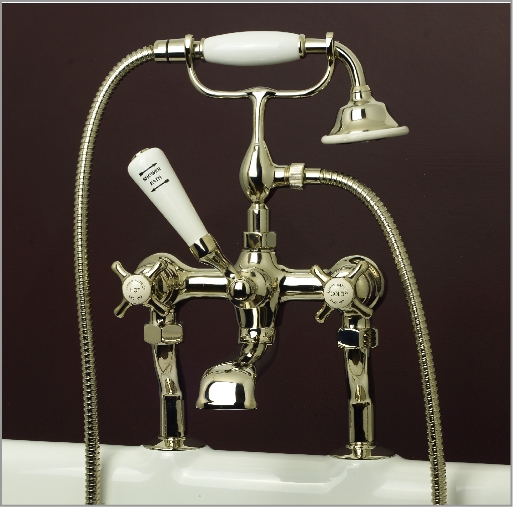
Bath Panel – A rectangle of building board, slab etc to conceal the underside of a bath, from the rim down to the floor, often with toe recess.
Bathroom Pod – A factory finished bathroom/toilet module, with its own roof and cladding. It can be placed on a prepared slab by crane and can be connected to services within a few hours
Batten – A small Section, normally of timber, to which sheet materials, slates and roof tiles are fixed
Batten Door – A matchboarded door
Batten Roll – A wood roll
Battenboard – A building board with a core of wooden battens and wood veneer facings, bonded together with resin adhesive
Battening – Common grounds fixed to wall as a base for a dry lining
Batter – An artificial, uniform, steep slope or its inclination, expressed as one horizontal to so many vertical units
Batter Peg – A peg driven into the ground to show the limits of an earth slope
Batting – Surfacing soft stone with a broad chisel in parallel strokes, giving a regular pattern of fluted cuts
Bauhaus – German design school founded in Weimar in 1906 and named by Walter Gropius in 1919. Its philosophy was austere functionalism – no ornamentation – and the use of industrial materials and inter disciplinary methods and techniques.
Baulk – A piece of square sawed or hewn timber of equal or nearly equal cross sectional dimensions
Bay – One of several uniform divisions of a building, such as the space enclosed between 4 columns or 2 beams.
Bay Window – A window formed in a projection of a wall beyond its general line and carried on its own foundation, unlike an oriel. If curved it is a bow window
Beading – Usually a semi circular moulding that masks a joint, sometimes alongside a quirk
Beading Router/Beader – A woodworking machine for moulding beads on wood or for cutting groves in which to insert beads
Beam – A structural member that resists load which bend it. Beams also include joists and girders
Beam Casing – Joinery casing around any type of beam or beam casing
Beam clamp – Bars with screws or slots and wedges that are tightened round beam formwork to prevent movement or leakage during concreting
Beam Encasement – Concrete encasement surrounding a structural steelwork beam
Beam Form – Formwork for a reinforced concrete beam or concrete encasement to a structural steelwork beam. ( See picture below)

Beam Hanger – A U shaped rod placed over a structural steel beam to carry the soffit form for concrete encasement
Bearer – A horizontal timber beam that carries the joists of a floor. It needs to be stiff and well supported or the floor will bounce when walked upon
Bearing – A surface which bears the load
Bearing Capacity – The pressure that a material can withstand, particularly the foundation ground (or soil) for footings
Bearing Length – The contact length between a beam and its support (either an end bearing or an intermediate bearing)
Bearing Pad – A block of concrete or stone used as a bearing plate
Bearing Plate – A plate built into a wall to support the end of a beam or the base of a column, spreading the load over an area large enough to prevent the wall failing
Bearing Pressure – The load on a bearing surface divided by its area
Bearing Wall – A load bearing Wall
Bed – The undersurface of a brick, building stone, slate or a tile laid on horizontal bedding to make a joint
Bed Joint – A horizontal mortar joint in brickwork or blockwork, usually 10mm thick
Bedding – A thick layer of material laid over a surface to fill the irregularities between it and a component placed on top of it and/or;
Laying an element on bedding and bringing it to its final position by steady pressure, moving it to and fro or tapping it with a mallet or a trowel
Bedding and jointing – The main operations of bricklaying, laying bricks in courses on mortar bedding and shaping the joint faces
Bedding Planes – Layers along which sedimentary rocks were originally deposited horizontally. Some rocks tend to split along these planes
Bedhead Panel – A stainless steel plaque on the wall above a hospital bed, with outlets or connectors for services: medical gases, telephone, call bell
Bedpan Sink – A sanitary fitting for washing and scalding hospital bedpans by hand.
Bedpan Washer – A machine that washes and scalds bedpans automatically
Belfry – The part of a steeple or tower in which bells are hung.(See picture below)

Belled-out bored in situ concrete pile – A deep foundation bored down to good ground and widened at the bottom to reduce the bearing pressure
Below Ground Level – Said of work on the substructure and foundation and for buried services
Belt Sander – A portable sander with a sandpaper belt, used for the fine smoothing of joinery and occasionally of metal and masonry
Bench – A strong firm work top for jobs requiring tools worked by hand or power.
Bench grinder – A power tool attached to a bench, usually within two abrasive wheels, one each side of its electrical motor
Benching – Concrete in the base of an Inspection chamber, cast to form a deep channel sloping gently up to the walls each side. It ensures that no solids are left after flooding and is stood on while rodding
Bend – A short length of pipe or duct for turning a corner, which allows thermal movement (expansion or contraction) in the pipework
Bender – A bending tool or a machine for bending reinforcement bars or pipes
Bending – Making a curve in a straight material by forcing it to change shape
Bending spring – A helical spring of circular crossection inserted into a copper or plastic tube to keep it circular during hand bending
Bending tool, bar bender – A hand tool with two lugs and a long handle for bending steel or plastic tubes or reinforcement bars
Bent – A piece of timber curved by lamination or steaming
Bespoke System – High quality purpose made building elements or complete buildings
Beton brut – State of concrete once any casting framework has been removed.
Bevel – The meeting of one surface with other at an angle not a right angle. Chamfer is a type of bevel
Bevel Halving, Bevelled – A scarf joint between timbers
Bevelled Closer – A brick with a vertical bevel cut running from the middle of one side to a far corner. About a quarter of the brick is cut off.
Bib, Bibcock – A water draw off tap fed by a horizontal supply pipe, not by a pipe from below, as is usual for a washbasin with a pillar tap
Bid – A tender
Bidet – A sanitary fitting for washing the nether parts of the body. Water is supplied from an overim mixer or an upward spray. The discharge is waste water not soil water
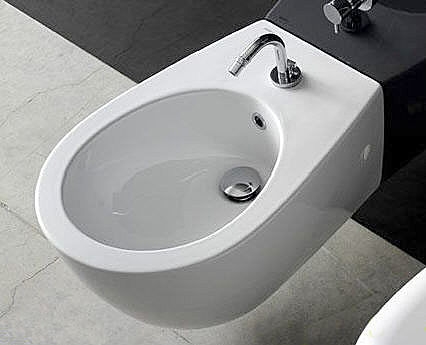
Bi-fold door – A compact cupboard door with two pairs of folding leaves
Bill of quantities (BOQ) – A set of descriptions of the materials and labour needed for construction work with their quantity and their unit price listed as numbered items. Generally used to calculate the estimated cost of construction of the said project
Billing – Writing the description and quantities of each item in bill of quantities
Bimetallic corrosion – Corrosion from dissimilar metal contact
Binder – A material that hardens to bond things together. Binders include: the film forming agent in paint; the resin in an adhesive or lime in plaster and/or;
Any tie securely fixed to a number of main framing members to stop them moving in relation to each other
Bird Screen – A grille of wire netting to stop birds entering fresh air inlets, exhaust outlets and other ventilation openings
Bit – An interchangeable working tool that fits into the chunk of a drill, a router or a carpenter’s brace. The most common bit is the drill bit and/or;
The working head of a soldering iron, usually made of copper
Bit Gauge – A small metal piece that can be fixed to a drill bit to stop drilling at the right depth
Bitty – A bitty paint or varnish contains small nibs of paint skin, etc which stick up above the paint surface after a coat is applied
Bitumen – A smooth, black and heavy material which becomes liquid when heated made from natural or distilled petroleum and similar to pitch and tar
Bitumen Boiler – A heated vessel for melting bitumen before it is spread
Bitumen Felt – Sheets of fibres matted into felt and bonded by saturating with bitumen or bitumen polymer
Bitumen Polymer Sheet – High performance bitumen felt, made with bitumen that contains a polymer modifier, such as ethylene/propylene. It is reinforced with polyester or glassfibres and mostly used as a single layer in membrane roofing
Bituminous Paint – Paint made from asphalt or petroleum bitumen and a solvent or a bitumen emulsion. It is inexpensive and normally used for waterproofing or to protect metals.
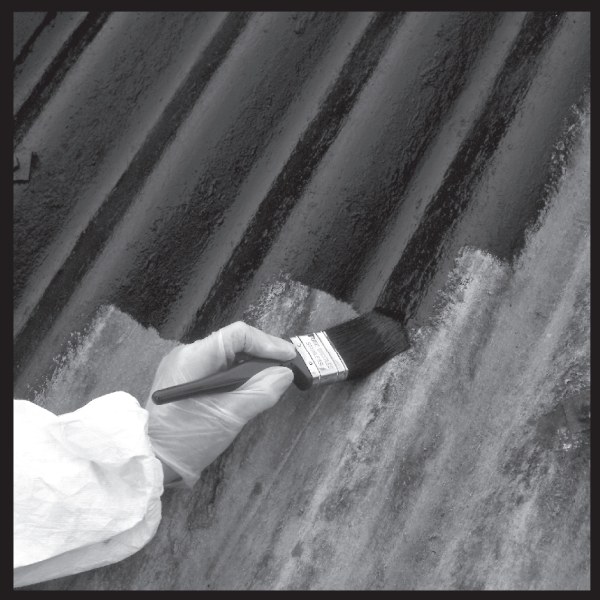
Black Steel – Steel with a surface layer of dark coloured iron oxides used for low pressure hot water heating pipes
Blade – The vane of a fan impeller that moves air by spinning. In a centrifugal fan, the blades are either backward curved, forward curved or radial. In a propeller fan they are aerofoil shaped and/or;
The part of a tool (trowel, plane) or a earth moving machine that touches the work and/or;
A slat of wood or glass as infill to a louvre
Blade seal – A thin strip of rubber projecting from the edge of a door leaf, as a wiping seal to weather-strip the frame or for smoke control
Blank Wall – A wall with no openings for door or windows
Blanket, Quilt – Insulation made of mineral wool, such as glassfibre, that comes in rolls, usually with a paper lining to each face
Blast Cleaning – Driving a high speed stream of abrasive, air or water on a surface by forcing it out of a pipe with compressed air
Blast Primer – A quick drying pretreatment primer applied immediately after the blast cleaning of steel. It prevents re rusting for a short time and allows steel to be handled
Blastfurnace Cement – An economical blended cement made by mixing finely ground blast furnace slag with portland cement clinker
Blastfurnace Slag – Slag
Bleaching – The removal of colour by chemical action, often an oxidation caused by sunlight an air
Bled Timber – Timber from yellow pine trees that have been tapped for resin, usually inferior to other timber
Bleed – To blow off or purge gases from a pipe caring a liquid
Bleed Valve – A valve for bleeding gases from a pipe
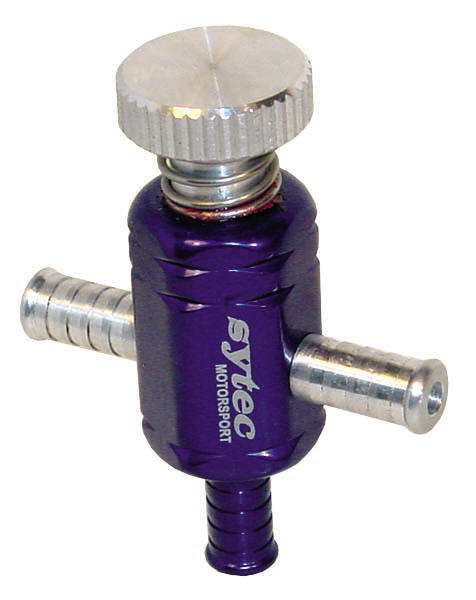
Bleeder Pipe – A pipe through a retaining wall as a weephole for water
Bleeding – The penetration of a coat of paint by substances from the substrate that dissolve in the paint’s medium, usually causing discolouration
Blemish – Anything which mars the appearance of a finish, without affecting strength.
Blended Cement – Portland cement mixed with other materials that have some chemical reaction with it.
Blended Water – Hot and cold water that have been combined by a mixer
Blind fixing – Concealed fasteners or fixing systems
Blind Hole – A hole that does not pass right through a material, as a bottomless hole does
Blind Mortice – A mortice that does not pass through the timber
Blind nailing – Nailing that is not directly visible
Blinding concrete – A layer of dry lean concrete about 50mm thick covering the bottom of an excavation, either over hardcore or directly on the foundation, to seal the underlying material and prevent mud from dirtying the reinforcement bars or intruding into the concrete of footings
Blinds – Panels of textile which can be drawn down inside or outside a window to control daylight or heat from the sun
Blistering – Bubbles in a paint surface caused by moisture or resin vapourizing under the surface
Block Bonding – Connecting several courses of brickwork of one wall into the courses of another, often in order to bond shallow facing bricks into thicker common bricks in the backing
Block Bridging – Solid bridging
Block Saw – A mason’s handsaw for cutting lightweight concrete blocks.
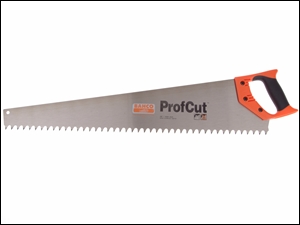
Blockboard – A building board made of wooden core strips upto 30mm wide, glued between veneers with a grain at right angles, forming a composite board
Blockmaker – A machine for making precast concrete building blocks.
Blockwork – Masonry of precast concrete building blocks laid in cement mortar
Bloom – A thin film which forms on the surface of a gloss paint or varnish and hides the colour or reduces the gloss. This defect could be due to the paint composition or because of improper application in humid air conditions. It can sometimes be removed with a cloth
Blower – A fan for air conditioning, or an compressor and/or;
A blow gun for cleaning formwork
Blowlamp – A compact burner with a powerful flame and a built in fuel supply, used for heating materials, mostly to soften them for hand work such as soldering and bending pipes or conduits
Blown Air – Supply air distributed by a fan through ductwork
Blown Bitumen – Bitumen oxidized by blowing a stream of air though the heated material, which makes it more rubbery and raises its softening temperature, for use as bonding compound
Blown Oil – Linseed oil that has had air forced through it while also being boiled. It dries more quickly and is used in oil paints and linoleum
Blowpipe – A torch used for oxy-cutting steel
Blue Stain – A blue fungal discolouration in the sapwood of timber which does not reduce its strength
Blueing – Increasing the apparent whiteness of a white pigment or paint by adding a trace of blue
Board Measure – The superficial measurement of a quantity of timber
Board-finish Plaster – Usually a low expansion retarded hemihydrate plaster, suitable for single coat finishing work on true surface such as gypsum plasterboard. It is one of the few plasters to which lime should never be added
Boarding Joists – Common Joists for floor boarding.
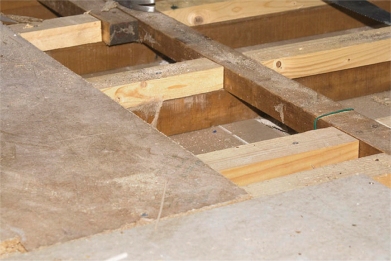
Boarding, sheathing boards – Boards laid side by side
Boasted Ashlar – A rough finish to stonework made by boasting
Boaster – A mason’s boasting chisel, 40 to 80 mm wide, struck by a mallet in dressing stone
Boasting – The hand wasting or rough dressing of the surface with oblique or vertical strokes, which are usually not uniform, from a boaster
Boil Resistant Adhesive – An adhesive with good water resistance, able to withstand hot water for many years also attracts by insects and fungi
Boiler – A water heater in which the water should not boil. A boiler is used for the production of domestic hot water and hot water for central heating
Boiler House – A plant room for housing boilers
Bolster – A broad based steel brick layer’s chisel with a blade about 110 mm wide
Bolt – A fastener with a head and screw thread, for a nut and/or; the tongue of the lock that prevents the door opening when it is out (thrown) and allows it to open when withdrawn and/or; Hardware to hold door or shutter closed, usually with direct or simple action
Bolt Box – Formwork round foundation holding down bolts for structure steelwork, to make a pocket in the concrete. During Concreting the bolts may move out of position by up to 20 mm. After the concrete hardens steelwork is erected, with the bolts passing through holes in each baseplate. The pocket formed by the bolt box allows the baseplate to be moved into its right place. Later the bolt boxes are grouted
Bolt Croppers – A pair of hand shears used for cutting bolts or steel rods
Bond – The layout of courses of bricks or blocks in a wall. It is important to keep every vertical joint at least a quarter length of a brick or stone from the next vertical joint above or below, using bats and closers.
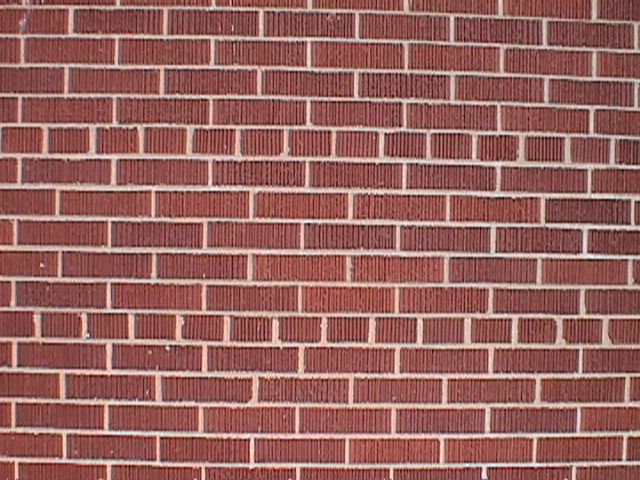
Bond Beam – A reinforced concrete beam made inside a course of hollow blockwork from which the block ends and internal walls have been removed. The beam ties the wall together
Bond Course – A course of headers in a brickwork or blockwork wall
Bonding – The use of high strength adhesive usually thermosetting resins, elstomers or thermoplastics to make permanent structural joints, composite metal members, prefabricated building panels etc.
Bonding Compound – Hot molten blown bitumen put on to a roof to stick layers of built-up roofing together. A sealing compound is similar but is applied cold
Bonding Plaster – A pre-mixed light weight gypsum plaster containing exfoliated vermiculite, used as the undercoat in two-coat work on surfaces difficult to bond, such as smooth formed concrete walls
Bonding Tape – Tape glued on both faces for joining sheet materials in damp-proof courses, vapour barriers (to control humidity, smell etc). The tapes could be of bitumen felt, polyethylene
Bonding Treatment – Any treatment of a surface before the application of a finish (paint, plaster) so that it will stick. E.g. Roughing up the wall surface before plastering
Boning – The use of T shaped rods for setting out a flat surface, for excavations, ground slabs, drain laying etc.
Boning Pegs – Small hardwood pegs that are placed at the edges of large stones to be dressed flat, used with winding strips as guides
Boom – The jib of a crane, the dipper arm of a backhoe
Booster – A pump for increasing the pressure in a water supply pipe or fire riser and/or; A heating element in an electric storage water heater which is switched on during the day if the draw-off temperature drops too low
Boot – A step down formed in the edge of a concrete floor slab (or a beam or lintel) to carry the outer skin of a cavity wall. This allows a drop in the damproof course to drain rainwater outwards through weepholes in the facing brickwork. The movement joint under the boot is weatherproofed with a sealant and the boot’s outside face may be concealed with brick slips
Boot Lintel – A lintel across a door or window opening, with a boot
Booth – A small room or cubicle, for privacy or isolation, often with sound insulation
Bore – To pierce so as to form a hole and/or; To drill a hole, or the hole after it is drilled and/or; The internal diameter of a hole or a pipe. Copper pipe for water supply is mainly Microbore
Bore Lock ( Key-in-knob set, tubular mortice) – A door lock with a tubular T-shaped case. It fits into a bored mortice made with a hole saw from the face and with a drill from the stile, which is easier than cutting a rectangular mortice
Borer (Woodworm) – Wood-boring beetles in the larval phase, which burrow into timber for food and shelter, leaving behind wormholes when they emerge as adults e.g. furniture beetle, longhorn beetle etc. Treatment against attack using preservatives usually does not penetrate deeply enough to reach all borers, but they are killed by high temperatures, as in kiln dried timbers
Borosilicate Glass – Heat and chemical resistant clear glass made from borax as well as the usual silica, giving complex compounds of sodium borosilicate. It is used in factory shaped and tempered fire resisting glass, as glassfibre, to make vitreous enamel and in glass drain pipes
Bottle Trap – A trap on the waste from a kitchen sink or bathroom basin which has a bottle shaped cap that can be removed to clean out any rubbish causing a blockage, such as matches, hairpins and hair. Bottle traps are usually less self cleansing than a tubular S-trap.
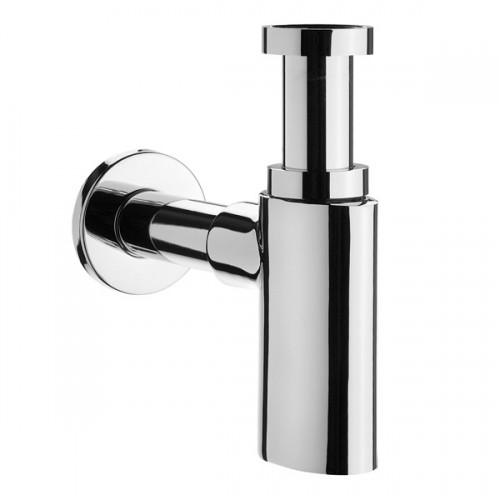
Bottom Chord – The lowest member of truss or girder
Bottom Plate – A member along the bottom of a framed partition that spreads the loads from the studs to the supporting floor
Bottom Rail – The horizontal bottom member of a framed door, casement or lower sash
Bottom Tie – A base tie of a pressed metal door frame
Bottom Ventilation – An air inlet for natural ventilation, particularly to a plantroom or machinery enclosure
Bottom-hung window – A window with its opening sash hinged at the bottom
Bottoming – Hand trimming excavations with a shovel, working behind an excavator such as backhoe, to clean out lumps of dirt and leave a tidy formation
Bottomless hole – A hole which passes through a material. It is therefore difficult to make a fixing in it except with a toggle bolt, anchor etc
Boundary – The edge of a building site
Bow Window – A projecting Bay Window which is curved in Plan
Bowl – The part of a sanitary fitting made to contain water, usually with a waste outlet. Kitchen sinks may have one or two bowls. A bowl of a WC is also called the pan and/or;
A light diffuser over a luminaire, often made from acrylic sheet
Bowl Saw – An ancient type of saw with a thin blade held at both ends in a loose H frame and tightened with twisted wire or string
Bowl,urinal, pod – A rounded vitreous china urinal, usually rimless and wall hung at varying heights to suit users
Box Cornice – The edge of a roof built out to conceal the gutter, with a fascia in front and a soffit board underneath
Box Frame – A sash window cased frame
Box Gutter / trough – A roof gutter below the general level of the roofing, with a lining in supported sheetmetal roofing, or bitumen roofing felt over a wooden box. Box gutters should always have a safety overflow, such as a scrapper through a parapet, so that if the outlet becomes blocked with leaves or snow, the rainwater will not flood though the ceiling or overload the roof
Boxed Heart – The heart centre, usually within a 100 mm square, cut out during the conversion of timber and discarded, This is done with some eucalyptus hardwoods, which have poor heart
Boxing – A formwork box, or a casing of building board on ground or studs
Boxwood – A hard hardwood used for making chisel handles BQ,BOQ – Bill of quantities
Brace – A strut or tie that stabilizes other members, usually placed so that a triangle is formed, e.g. a knee brace, the braces on a matchboard door, temporary braces during construction etc.
Braced Frame – A structural timber building frame with widely spaced, heavy posts and beams and girders which carry main loads. It has infill walls, which are non load bearing. Bracing for structural stability comes partly from the joint between the posts and beams, although additional cross-bracing can be concealed in the walls

Bracket – A support for a shelf, projecting from a wall.
Bracket Arm – An outreach arm
Bracket Lamp – A wall-hung Lamp
Bracket Scaffold – A scaffold carried on brackets bolted to a wall
Bracketed Stairs – Stairs with treads carried on a cut string, usually with overhanging nosings
Brad – A wire nail usually 50 to 65 mm long, with rounded built head and/or;
A cut nail of constant thickness but tapering width, with a square head projecting from one edge only, or an oval-wire brad
Bradder – A small nail gun that drives brads up to about 65 mm long
Braided Cable – Flexible flat cable made from several strands of bare copper wire plaited together, used for the earth bonding of moving parts, e.g. switchboard doors
Bracket – A projecting support usually fixed to a wall or column, Stair handrails are often on metalwork brackets. Pipework can be supported by brackets with two piece cleats and/or;
A short vertical board fixed to the carriage of a timber stair to support the tread directly
Branch – A secondary pipe or cable connected to a main in a distribution or collection system, such as water supply, drainage, sewerage or electrical circuits
Branch Circuit – The electrical wiring to power or lighting use points, from the fuses in the distribution board, usually run as either a ring main or a radial circuit
Branch Manhole – A manhole in which a branch connection is made
Branch Pipe, discharge pipe – A branch to carry soil water or waste water to the stack.
Branch Vent – A pipe which admits air to the downstream side of the water seal in a trap the start of a drain. Usually it is run upwards to the stack vent, which lets in air through its top end. The branch vent prevents unsealing of the trap as a flush of water passes down the soil stack, e.g. as in a one-pipe system of sanitary pipework
Brash timber, Brashy – Timber which breaks with small resistance to shock and little or no splintering. This short grain may be due to fungus
Brass – A metal alloy made from a mixture of copper and zinc, often with small amounts of nickel, lead iron, etc, used in traditional builder’s hardware and some pipe fittings. Brasses are mostly easily formed, strong and corrosion resistant, but are best not used with other metals, which could cause dezincification
Brazilian Mahogany – True Mahogany, a close grained red timber with fine silky texture, hard and very little moisture movement. It is stronger than oak but slightly easier to work and used for best joinery
Brazing – A generally simple, inexpensive way of joining metals using a copper- zinc filler metal (hard solder) which melts above 500deg c, normally with an oxy-acetylene flame. The two surfaces need suitable preparation, usually limited to thorough cleaning. A flux is also needed. Brazing, particularly silver brazing, us widely used for capillary joints in copper tube or brass pipe. Brazed steel joints are not as strong as welded ones
Break Draught Damper – A flue damper
Break glass unit – A manual fire alarm call point with a breakable glass cover.
Break joints – Staggered joints
Break out – To cut away part of a building fabric to make a secure connection with new work, e.g. the toothing of brickwork or the exposing of reinforcement bars
Breaker – A power tool for breaking rocks, concrete or roads by forcefully hammering a pick or similar tool. It can be a hydraulic, pneumatic or electric hand held jackhammer or a mounted backhoe

Breaker Slab – A clay or concrete slab in the backfill over buried cables, to indicate their presence, in the same way as a tracer
Breaking Down – The first of two stages in conversion of timber, in which the log is sawn into squared flitches
Breaking of seal – The unsealing of traps
Breast – A projection of a wall into a room, containing the flue and hearth of a fireplace and/or;
The wall under a window sill, down to the floor
Breast Drill – A large hand drill operated with both hands, with an extension and plate for thrust from the user’s chest
Breather Hole – A tiny hole from the air space between secondary glazing out to the cold side, where the air contains less moisture in winter, even at a higher relative humidity. As atmospheric pressure rises and falls, the air space gradually fills with dryer air, reducing condensation, but dirt and insects may enter unless the holes have a filter e.g. a porous tape
Breather Membrane – A building paper that is microporous to allow ventilation and the escape of water vapour. It is put on over the outside of heat insulation and under the external cladding of a timber framed wall (or roof). It also helps prevent driving rain from passing inwards. Breather membranes must be on the ‘cold’ side of the wall, i.e. on the opposite side of the framing to its vapour barrier
Breech Fitting – A junction pipe fitting
Breeching – A double inlet to a dry riser accessible from the street
Breeze Block – A building Block formerly made with coke breeze from gas works. It is superseded by the clinker block
Breezeway – A covered walk between buildings
Bressummer – A long heavy Lintel across an opening, to carry the wall above. It is generally not used nowadays. It was usually made of Timber
Brick – A rectangular block usually so sized so that it can be easily held in one hand. They are generally proportioned for the lengths of each side (face, bed and end) to form multiples, forming Bonds. Building bricks vary widely in strength, durability and appearance from the most costly engineering bricks or facing bricks to commons. They are mostly used to build walls and vary in type from solid to frogged, cellular, perforated and hollow. Bricks shaped differently from the normal full brick are called specials.
Brick axe – A bricklayer’s hammer
Brick Damp Course – A damp-proof course in a wall made from two courses of damp-proof course bricks, or engineering bricks with a water absorption of less than 7% laid with staggered joints in 1:1/4:3 cement:lime:sand mortar. The mortar should not carry any plasticizer as this may reduce adhesion. As brick damp courses are more rigid and resist tension better than other types, they are suitable for freestanding walls
Brick Elevator – Mobile Contractor’s plant used for raising building material to a scaffold. It has a rubber belt and steel cleats to stop brick slipping at steep angles
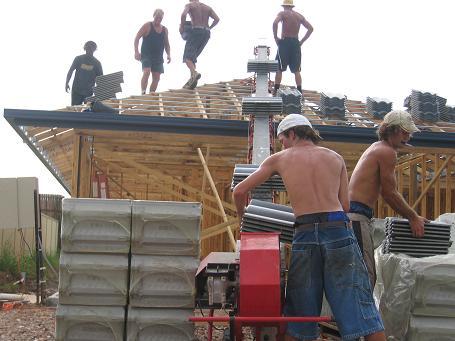
Brick Nogging, Brick Partition Wall – Non-Load bearing wall, usually infilling between the columns or a steel framed building. The wall is generally constructed by bricks on edge. Wall ties and movement joints are needed for them
Brick Tie – A wall tie
Brick trowel – A long tapering triangular trowel held in one hand for bedding and jointing bricks
Brickbat – A brick cut across and shorter than full length, used to complete a bond and/or; A bat
Bricklayer – A person who builds and repairs brickwork (bricklaying), on large projects usually working as part of a gang under a foreman bricklayer
Bricklayer’s Hammer – A small hammer with sharp cross-peen as well as the striking face, used for breaking and dressing bricks
Bricklayer’s Line (Soot) – A line used as a guide during bricklaying
Bricklayer’s Scaffold – A scaffold supported by putlogs, which have a flattened end to fit into raked-out holes in the bed joints, the other end being carried on ledgers held up by the standards
Bricklaying – The art of laying bricks in courses to make brickwork by bedding and jointing with cement mortar. Joints are usually shoved and the bricks kept true and plumb by working to a bricklayer’s line, which is stretched between profiles
Brick-on-edge – Brickwork, usually of headers, laid on edge for a capping or sill
Brickwork – A wall made up of courses of bricks laid in mortar according to a bond.
Brickwork Beam – A concealed lintel made by inserting reinforcement in bottom bed course of brickwork over an opening, for clear spans upto 2.1 Mt
Brickwork Chaser – A power tool that cuts a neat chase in brickwork to receive electrical conduit or a pipe
Bridging – The spanning of a gap with common joists and/or;
The stiffening of adjacent wooden floor joists by a row of solid bridging or herring-bone strutting at right angles to the joists.
Bright – A description of freshly sawn timber without discolouration and/or;
Steel with low surface oxidation
Brilliance – The cleanness and brightness of a colour and/or;
The clearness of a varnish or lacquer; the absence of opalescence and similar defects
Brise Soleil – A French term for a permanent sun shade (Horizontal or vertical blades, decorative screen walls) outside an external wall
Broach – The pin in the keyhole of lock with a hollow key and/or;
A pointed mason’s chisel used for wasting stone
Broadloom Carpet – Fabric floor covering in rolls 2.50 to 4.00 Mt wide.
Broken Bond – Brickwork or Blockwork which is not entirely built to format, it has bats in the courses rather than full bricks.
Bronze – A hard, corrosion resistant alloy of copper and usually tin, sometimes with other elements
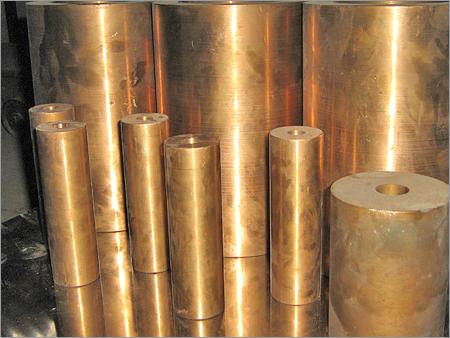
Broom-finish Concrete – A floor slab that is floated and trowelled smooth, then finished by drawing a stiff broom across it to make it a non slip surface
Brooming – Scratching a floating coat with a stiff broom to make a key for plaster, or giving a broom finish to concrete
Brush – Paint brushes are made from synthetic fibres or animal bristles (Stiff Hairs) held on to a handle, usually with a metal ring or ferrule. The bristles of larger brushes may be set in synthetic resin
Brush Seal – A long Strip of bristles fixed to project from the edge of a door leaf, as a wiping seal for weather-stripping or for smoke control
Brushability – The ease with which paint can be applied by brushing. Brushable paints are not gummy, do not cause ropiness and enable a live edge to be easily picked up
Brutalism – Functionalist style of the 1950’s -60’s that left materials such as concrete determinedly undistinguished.
Buff – To polish or grind down a floor finish of terrazzo or screeded material. The process is derived from the high speed buffing wheels of a machine
Build – To erect, to form or construct.
Build Up – To close up building, to cover with buildings, to establish gradually.
Builder – A house builder, usually a skilled tradesman who works on site and does his own estimating and contract negotiations and/or;
A building company usually a main contractor for large building projects
Building – Any structure for whatsoever purpose and of whatsoever material it is constructed and every part thereof whether used as human habitation or not and includes foundation, plinth, walls, floor, roofs, chimneys, plumbing and building services, fixed platforms, verandas, balcony, cornice, or any wall enclosing or intended to enclose any land or space and signs and outdoor display structures, monuments, memorials or any contrivance of permanent nature / stability built under or over ground and/or;
Anything built.
Building Block – A rectangular masonry unit that is larger than a brick and/or; A block of precast concrete, burnt clay etc
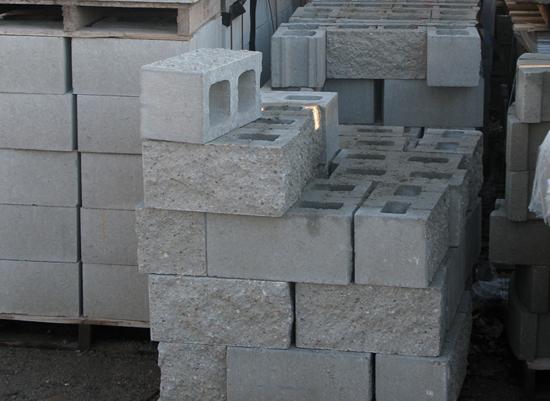
Building Board – Rigid sheeting made from materials such as wood, gypsum, fibre-cement, flax or cane fibre or a composite e.g. Chipboard, hardboard and gypsum plasterboard
Building Centre – An organisation set up to provide information on building products and building technologies
Building Code – A document containing local building bylaws
Building Control – Laws and inspection procedures to ensure that buildings are built correctly. It is administered by the local authority
Building Height of – The vertical distance measured in the case of flat roofs, from average level of the adjoining street to the highest point of the building to the adjacent to the street, wall, and in the case of pitched roofs, upto the point where the external surface of the outer wall intersects the finished surface of the sloping roof and in case of gables facing the road, the mid point between the eaves level and the ridge. Architectural features serving no other functions except that of decoration shall be excluded for the purpose of taking heights. If the building does not abut, it is on a street, the height shall be measured above the average level of the ground, around and contiguous to the building.
Building Line – The line upto, which the plinth of a building adjoining a street or on a future street may law-fully, extend. It includes the lines prescribed in the Delhi Master Plan or specifically indicated in any scheme or layout plan, or in these byelaws.
Building Paper – Fibre-reinforced bitumen between layers of kraft paper, laid under concrete to prevent loss of cement into earth and damage from chemicals in the soil. It is also used for many other purposes – to cover the boarding of a wall or a roof
Building Permit – Authorization by the local authority to erect a building, essential before site work can start. It is given in reply to an application to build
Building Society – Building Society A society that advances money to its members towards providing them with dwelling houses.
Building Surveyor – A person trained in the techniques, costs and laws of building construction. He or she advises on alterations, building defects, easements, extensions, renovations and structural surveys
Built up area – Land area covered with buildings.
Built-in – Fittings recessed into the fabric of a building or a structural element e.g. luminaries in a ceiling or cupboards in a wall are described as built in
Built-up – A built-up assembly is one made up of several components, usually glue-fixed, but sometimes screwed, nailed, bolted or welded
Bulk Excavations – Groundworks which remove large amounts of materials and reduce the general level down to near formation. They are made with large and efficient excavators that are not suited to digging out the isolated excavations
Bulkhead, turret – A roofed box shape built above a roof to cover a water tank, lift shaft, stair well etc
Bull header – A special brick with a bullnose end
Bullet-resistant door – A steel or aluminum door with wood facings resembling an ordinary door but providing more security
Bullet-resistant glass – High grade security glazing, usually laminated glass 20-200 mm thick with many interlayers, or a glass/polycarbonate composite
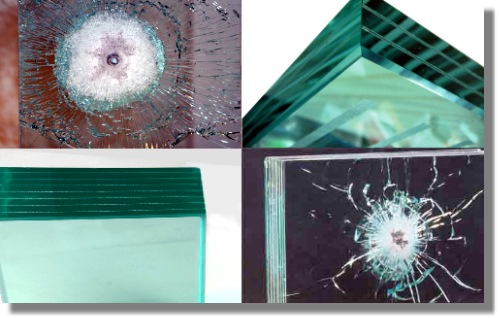
Bullnose – The rounding of an arris, in general any rounded end or edge of a brick, a step, a joiner’s plane etc
Bunched Wires – Prefabricated electrical wiring made up for trunking
Bund – An uninterrupted wall of earth (earth bund), blockwork (bundwall) etc.
Burglar Alarm – An intruder alarm system
Buried Services – Pipes or cables buried in the ground for drainage, electricity, gas, telecom, water supply etc
Burl – The curly, much valued figure got by cutting through the enlarged trunk of certain trees particularly walnut. It is formed by the dark pith centres of many undeveloped buds
Burner – The part of a boiler or a gas torch where oil or gas fuel is released, mixed wit air and burnt
Burning off – Removing old paint by heating it with a blowlamp until it softens, then scraping it off.
Burnishing – Polishing metals for finishing or to hone a cutting edge
Burr – A jagged edge left after metal is cut or a fin on concrete from a formwork joint
Burring Reamer – A tool that removes burs left by the pipe cutter
Bush Hammer – A hand held machine (usually air driven), or a mason’s hammer, with rows of raised tooth like pyramids on its face, used for hacking or scabbling the surface of fairly hard materials such as stone or concrete
Butt Hinge – The commonest hinge for doors. When the door is shut the two halves are folded tightly together. Each flap is usually morticed, one into the door frame and the other into the hanging stile. The ordinary steel butt is very cheap and durable, but ball-bearing butts are smoother running and noiseless
Butt Joint – A joint between two square ended pieces of the same thickness without overlap
Butt Veneer – Veneer with the strong curly figure from a tree trunk
Butter coat – A soft, wet coat of render for a dry-dash finish
Buttering – The spreading of mortar on the ends of bricks to form perpends or on the backs of floor tiles before bedding
Buttress – Supportive wall of brick or stone and/or; A projecting support built to the outside of the wall, any support or prop

Buzz Saw – A circular Saw
Byelaw, by-law – Laws governing all phases of construction in a particular location
Bypass – An arrangement of pipes (for conduits) for directing flow round instead of through the normal pipe
Byzantine – Relating to byzantium or Constantinople.
This Dictionary is an invaluable guide for anyone interested in Architectural / Construction Activity. Click on the alphabets given below, for the word you are looking for.
A B C D E F G H I J K L M N O P Q R S T U V W X Y Z

